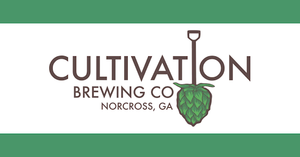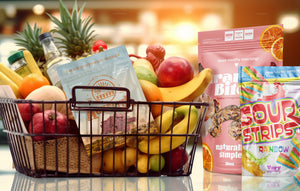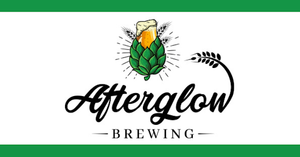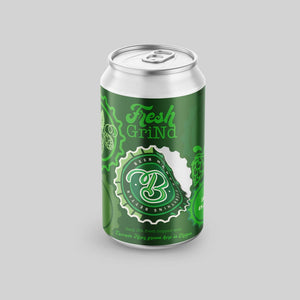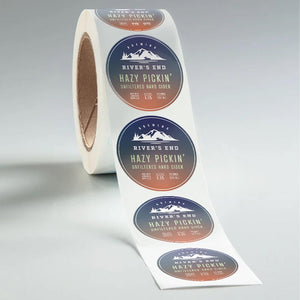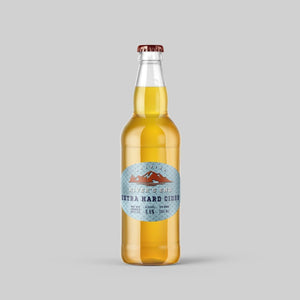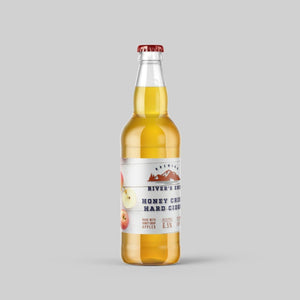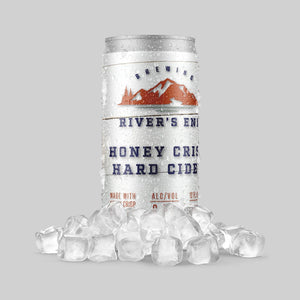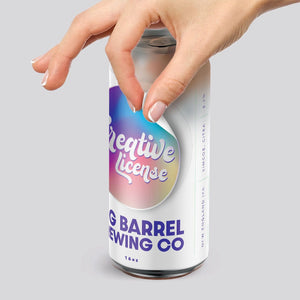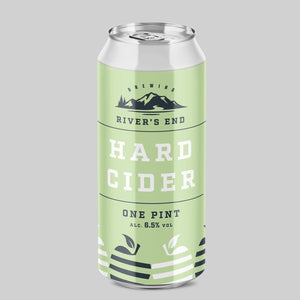Hard Cider Label Requirements: Understanding the TTB & Compliance

Hard cider label requirements are like a relationship with your ex — complicated. If you’re an aspiring hard cider producer, then you need to know there’s far more to a hard cider label than eye-catching design or mouthwatering descriptions.
How so?
Well, the various requirements from the Tobacco Tax and Trade Bureau (TTB) and Federal Drug Administration (FDA) make it tough to design a compliant hard cider label. Plus, the overall strength of your delightful drink plays a vital role in the labeling requirements.
But never fear! We’ll break down the different hard cider label requirements and what your brewery needs to know to design a compliant, creative label.
Who Creates Hard Cider Regulations?
The problem with government regulations is that lawyers write them. As such, they aren’t always clear and easy to follow for the rest of us. Knowing precisely which rules apply to your particular product is, therefore, a challenge.
According to the TTB, hard cider is a wine fermented from apples, including apple juice or apple concentrate.
But in 2017, the TTB broadened the definition of hard cider. As a result, for a beverage to be classified as hard cider, it must meet the following criteria:
- Hard cider should have a max allowable carbonation level of 0.64 grams of CO2 per hundred milliliters of wine.
- It should also be less than and not equal to 8.5 percent alcohol by volume (ABV).
- Brewers can use pears and pear juice concentrate and still receive the hard cider tax rate.
These label requirements also changed which governing bodies could oversee different hard ciders. Since the 2017 changes, the FDA now regulates hard ciders with an ABV below seven percent. On the other hand, the TTB regulates hard ciders with an ABV of seven percent or more.
What Are the Requirements For a Hard Cider Label?

As a hard cider producer, designing the label for your product is the fun part. But unfortunately, it’s easy to overlook the legal requirements in the pursuit of an eye-catching design that gets your product flying off the shelves.
The FDA and TTB require you to include a lot of information on your label, with both organizations requiring different bits of information. You’ll need to have the following elements to meet either or both of these organization's requirements:
- Brand name (FDA and TTB)
- Bottler name and address (FDA and TTB)
- Type, class, or other designation (TTB)
- Alcohol content (FDA and TTB)
- Net content (FDA and TTB)
- Nutrition, ingredient, and allergen listings (FDA only)
- Government health warning (FDA and TTB)
- Various special ingredient declarations (TTB only)
Additionally, these components must meet specific requirements for how they’re presented on the bottle. For example, besides the alcohol content and health warning, all mandatory information must meet the following for minimum type size:
- If the container is 187 milliliters or less, the type must be at least one milliliter.
- Containers larger than 187 milliliters must have type at least two milliliters in size.
Let’s explore these different component requirements for hard cider labels in more detail next.
Brand name requirements
The FDA and TBB both require hard cider brewers to include their brand name on the bottle, that is, which brand name you’re selling the hard ciders under.

This component is usually the most prominent element on your label. But it’s okay to highlight other design elements besides your brand name. The powers that be only require that the brand name is included, not that it has to be the most prominent element. As you can see with Angry Orchard above, the logo is the most prominent design element on their label, with the brand name second.
But, what if you don’t have a brand name for your hard cider? In that case, the FDA and TTB require you to display the name of the bottler or importer in place of the brand name.
Bottler name and address
Both the FDA and TTB require hard cider manufacturers to include the address with the city and state on the label. But each organization has slightly different criteria for how the information is ultimately presented.
The address must include the city and state, but there are different rules for the bottler:
- The FDA requires labels to include the name and address where the drink was packed or bottled.
- The TTB label requirements include the name and address of the bottler or importer exactly as it’s written on the TTB permit. Additionally, the terms bottled, packed by or imported by must precede this component.
Type, class, or other designation
Only the TTB requires this component. Any hard cider with at least seven percent ABV must include an identification statement.
According to the TTB, hard ciders are considered a fruit wine. But you’re legally allowed to label your type as a cider or hard cider if it meets the following:
- The beverage is made via normal alcoholic fermentation of sound, ripe apple juice.
- It’s derived exclusively from apples (besides the addition of water, sugar, or added alcohol).
Net content
The TTB and FDA require hard cider labels to display how much product is in the bottle. For the FDA, you’re allowed to list this statement on any label, or you can etch or blow the net content information into the bottle itself. Check out above how ACE Joker lists their content on the product label, which is the most common method brewers use for complying with this particular requirement.

Unlike the FDA, the TTB requirements are more stringent. For the TTB, you can display the net content on the label or as an etching or blown into the container.
But the difference is that hard ciders with an ABV of at least seven percent must use the authorized metric standards of fill as per the Electronic Code of Federal Regulations — 27 CFR 4.72.
You’re allowed to use the following abbreviations:
- ML, mL, or ml for milliliters
- L for liters
Alcohol content requirements from the FDA and TTB
Hard cider manufacturers must include certain statements for the total alcohol content on their labels as per the FDA and TTB. Look at how 2 Towns Ciderhouse alcohol content is prominently displayed on their label in contrasting text color.

The FDA requires you to state the alcohol content as a percentage by volume. And it must be within .75 percent of what’s listed on the label.
For the TTB, you’re allowed a tolerance of 1.5 percent, and you can use these statements to convey the alcohol content:
- Alcohol __% by volume
- Alcohol __% to __% by volume
- Do not use “ABV.”
- May use “Alc.” and “Vol.” or “Alc” and “Vol.”
- May replace “by” with “/.”
Additionally, the alcohol content is a label element that has to follow specific type size rules, depending on the size of your hard cider container.
If the container is five liters or less, you must use a type of at least one milliliter and up to three milliliters maximum.
Nutrition, ingredient, and allergen listings

The FDA requires hard cider products with less than seven percent ABV to list the ingredients, nutritional facts, and possible allergens, as you can see in the example above from Scape Goat.
- Nutritional facts — Include a detailed description of the hard cider nutrient content as per the FDA formatting guidelines.
- Ingredient list — Every ingredient used to make the hard cider must be listed in descending order of predominance.
- Allergens — List any major food allergens on the label.
Government health warning
Any hard ciders that contain at least .5 percent ABV must include a government health warning, according to the FDA and TTB. You can display the warning on any label as long as it’s kept separate from the other information.

It’s the same for both organizations, and you’re probably familiar with it:
GOVERNMENT WARNING: (1) According to the Surgeon General, women should not drink alcoholic beverages during pregnancy because of the risk of birth defects. (2) Consumption of alcoholic beverages impairs your ability to drive a car or operate machinery, and may cause health problems.
For type, the warning has to meet the following criteria:
- Minimum 3 mm for containers larger than 3 liters (101 fl. oz.) with no more than 12 characters per inch.
- Minimum 2 mm for containers larger than 237 ml (8 fl. oz.) to 3 liters (101 fl. oz.) and no more than 25 characters per inch.
- Minimum 1 mm for containers of 237 ml (8 fl. oz.) or less with no more than 40 characters per inch.
Specific ingredient declarations
The TTB requires this component on hard cider labels. If these ingredients were used to make your drink, your label must include them:
- FD&C yellow no. 5
- Cochineal extract or carmine
- Sulfites if your cider contains 10 ppm or more sulfur dioxide.
What about Certificate Label of Approval (COLA)?
You’ve designed a hard cider label you’re proud to show off. And, you’ve done the not-so-fun part of meeting FDA and TTB label requirements. But the fun doesn’t stop there. Next on the agenda is getting the label approved.
The FDA doesn’t require pre-approval for hard cider labels. But the TTB does for beers, wines, and spirits.
Before packaging and shipping bottles across state lines, brewers must apply for and obtain a Certificate of Label Approval or COLA before they can start selling their products.
Good news — applying for a COLA is relatively simple. Just head on over to the online portal to register and submit your application. As long as you’ve followed all the rules and regulations for hard cider labels, you’ll get approved.
Exemptions to COLA
If you aren’t shipping and selling your hard cider across state lines, you can obtain an alternative exemption to a COLA. The exemption is TTB Form 5100.31. This form shows your product is exempt from the FAA Act, and therefore, you don’t need a COLA to sell it.
If you go this route, you must include the following text on your label:
For sale in (name of state where bottled) only
Design hard cider labels with Stomp
Creating an enticing hard cider label that also meets federal requirements isn’t easy. Add in any state requirements, and it’s a doozy that’ll have you reaching for the nearest bottle — if you get our drift.
But once you clinch a design you’re proud of, and it sings to your customers, you’ll realize any struggle was well worth the effort. At Stomp, we’re always here and happy to help you print a great label for your tasty beverage.
Get in touch with us today, and let’s get to printing your fun and creative hard cider labels.
- Marketing Team

